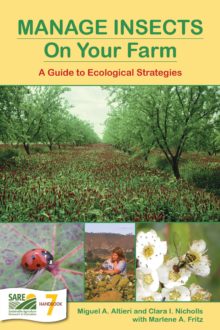Universal Principles, Farm-Specific Strategies
The key challenge for farmers in the 21st century is to translate the principles of agroecology into practical systems that meet the needs of their farming communities and ecosystems. You can apply these principles through various techniques and strategies, each of which will affect your farm differently, depending on local opportunities and resources and, of course, on markets. Some options may include both annual and perennial crops, while others do not. Some may transcend field and farm to encompass windbreaks, shelterbelts and living fences. Well-considered and well-implemented strategies for soil and habitat management lead to diverse and abundant — although not always sufficient — populations of natural enemies.
As you develop a healthier, more pest-resilient system for your farm, ask yourself:
- How can I increase species diversity to improve pest management, compensate for pest damage and make fuller use of resources?
- How can I extend the system’s longevity by including woody plants that capture and recirculate nutrients and provide more sustained support for beneficial?
- How can I add more organic matter to activate soil biology, build soil nutrition and improve soil structure?
- Finally, how can I diversify my landscape with mosaics of agroecosystems in different stages of succession?
Because locally adapted varieties and species can create specific genetic resilience, rely on local biodiversity, synergies and dynamics as much as you can. Use the principles of agroecology to intensify your farm’s efficiency, maintain its productivity, preserve its biodiversity and enhance its self-sustaining capacity.
